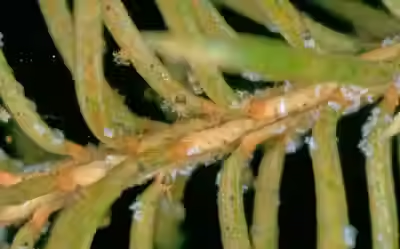The Cicadas are gone, but the damage continues
- Jordan Haas
- Jul 21, 2025
- 2 min read
Updated: Jul 22, 2025
People often ask if it will kill their tree, and the short answer is no, probably not.
However, it's a complex question because it likely won't kill your tree immediately or even within the year. However, newly planted trees or those already struggling with significant damage could be at risk.

The bigger issue:
Cicada damage increases a tree's vulnerability to pests and diseases. Female cicadas harm trees by slicing small twigs and laying eggs throughout the canopy tips of the tree. The branches affected by this slicing typically die, resulting in flagging, which is visible as brown hanging leaves in the picture.
The egg-laying wounds provide entry points for bacteria, fungi, and insects, disrupting vascular flow and adding stress to the tree. Generally, trees don't die from a single issue but rather from multiple factors, with one problem leading to another, ultimately causing the tree's demise.

Pests and disease pressure is already high in spring and summer. The open wounds from cicadas can attract sap-sucking insects, beetles, or borers, making oak trees more susceptible to diseases like Oak wilt disease. Once infected, red or pin oak trees can die quickly from oak wilt disease.
Conversely, trees in the white oak family are less vulnerable and have better disease defense mechanisms.

Maple or redbud trees can become more susceptible to diseases like Verticillium wilt disease. The vascular disruption stresses the trees, increasing their vulnerability.

Open wounds on Elm trees can attract bark beetles that spread Dutch elm disease. Canker diseases or Elm yellows may also be concerns.

How can you protect your trees?
1. Consult one of our Certified Arborists to inspect and create a care plan for your trees.
A care plan for each tree may vary depending on the symptoms or species of the tree.
2. Mulch the root zone of your tree to reduce competition for water and nutrients from other plants like the lawn. Avoid the trunk or root flare to prevent additional issues.
3. Hydrate your tree by watering deeply but infrequently. Our clay-rich soil takes time to absorb water but also dries out slowly. Irrigating the root zone for several hours every 2 to 4 weeks is ideal.




